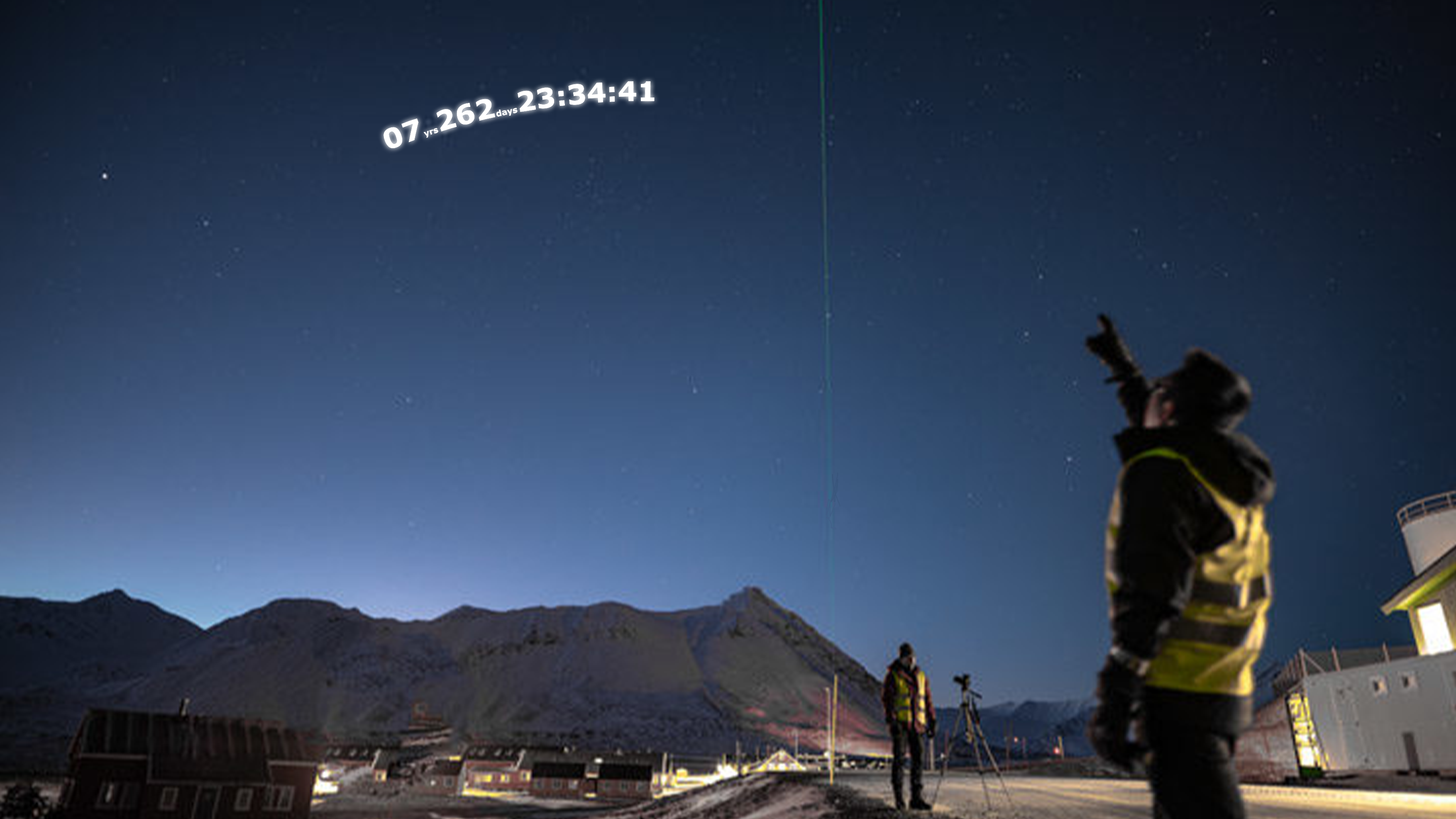Portfolio carrousel
What is a Cubesat?
What is a CubeSat?
A CubeSat is a square-shaped miniature satellite (10 cm x 10 cm x 10 cm—roughly the size of a Rubik's cube), weighing about 1 kg. A CubeSat can be used alone (1 unit) or in groups of multiple units (maximum 24 units).
Today, the average market price to launch a cubesat (typically 1-20 kg in mass) into low Earth orbit is around $30,000 per kilogram on a dedicated launcher. This implies that to launch a 12U (20-kg) cubesat, one should expect to pay about $600,000
What is the cost?
"I'm trying to achieve something that can democratize access to space and allow for decentralized participation," Reid said. "Hopefully, people don't waste money on something inappropriate, insulting or offensive."
https://www.npr.org/2021/08/10/1026365725/spacex-billboard-ads-satellite-orbit-livestream-space-tiny-gec-cubesat?t=1633858468664
visualization of the CubeSats
25 years
Initial conditions were considered depending on some usual physical and orbital characteristics (weight of the satellite, semi-major axis, eccentricity and inclination of the orbit), for a CubeSat remain in orbit for a period not longer than 25 years.
A few numbers for circular orbits and 1U cubesats: ~1 year @ 450 km, 25 years @ 640 km
Life Expectency of the CubeSat.
Not an entirely new concept SpaceX has been at the helm of some of the most innovative space tech ideas yet but none quite like what they’re planning to do now. However, space advertising isn’t exactly a new concept – it has a bit of history. The commercial activity in Space has been extremely limited, thanks to the heavy launch costs and subsequent advert costs. Despite that, companies like Pepsi, Pizza Hut, Tesla, KFC and Nissin Foods have had space advertising campaigns in the past.
Space ads done in the last 30 years
CubeSat Design and dimensions
The cubesat design was first proposed in the late 1990s by two professors: Jordi Puig-Suari of California Polytechnic State University and Bob Twiggs of Stanford University. They were trying to help students gain engineering experience in satellites, which are traditionally expensive to build and launch. The idea for the cubesat came in part from the miniature toy craze of the day, Beanie Babies, according to Spaceflight Now. Inspired by the individualized stuffed animals, Twiggs' idea was to allow students to build their own miniature satellites.
The basic design of a cubesat is a 10-centimeter (4-inch) cube with a mass of less than 1.33 kilograms (2.93 lbs.), the article added. But variations on the theme are possible. Cubesats can also be designed to encompass two, three or six 10-centimeter units for more complicated missions.
Cubesats reduce launch costs in two fundamental ways. They don't weigh that much, which means a rocket doesn't need a lot of fuel to heft them. In most cases, they also share a rocket with a larger satellite, making it possible to get to space on the coattails of the heavier payload.
Is advertising in space illegal?
However, there is no explicit ban on space advertising despite the light pollution and debris it potentially creates
Space debris
Space junk, or space debris, is any piece of machinery or debris left by humans in space. It can refer to big objects such as dead satellites that have failed or been left in orbit at the end of their mission. It can also refer to smaller things, like bits of debris or paint flecks that have fallen off a rocket.
How much space junk is there?
While there are about 2,000 active satellites orbiting Earth at the moment, there are also 3,000 dead ones littering space. What's more, there are around 34,000 pieces of space junk bigger than 10 centimetres in size and millions of smaller pieces that could nonetheless prove disastrous if they hit something else.
It could well be. Several companies are planning vast new groups of satellites, called mega constellations, that will beam internet down to Earth. These companies, which include SpaceX and Amazon, plan to launch thousands of satellites to achieve global satellite internet coverage. If successful, there could be an additional 50,000 satellites in orbit. This also means a lot more collision avoidance manoeuvres will need to be done.
Will space junk be a problem in the future?
Space Junk will become more when the CubeSats will be launched into space. What kind of consequences will this have for the future of space travelling?
The Climate Clock
The Climate Clock melds art, science, technology, and grassroots organizing to get the world to #ActInTime.
The project is centered on a simple tool: a clock that counts down the critical time window to reach zero emissions (our “Deadline”), while tracking our progress on key solution pathways (“Lifelines”).
By showing us what we need to do by when, the Clock frames our critical mission — a rapid and just transition to a safe climate future — and puts it at the very forefront of our attention.
Since its famous launch in New York in September 2020, Climate Clock teams have sprung up across the world from Chiapas to Kazakhstan, from Korea to Glasgow.
https://climateclock.world/
"It should have this kind of placement in the center square of our society so that´s why we put up the clock today and it hopefully will stay and people will see it as an important reference as a way to stay honest" - Andrew Boyd
Chosen Company
What message would I want to communicate?
What I would like to communicate is awareness for this countdown and the consequences of it when things wont change.
The ClimateClock will be displayed in space to create more awareness for this issue. Instead of being displayed on the center square of the society it will be displayed in space.
Everyone and anyone can see it.
The science is clear: we are in a Climate Emergency. Decades of increasing carbon emissions ar harming the natural and societal systems upon which humanity depends, threatening untold ecological and human devastation if we do not #ActInTime. The good news: there is still time.
Backed by the latest science, the Climate Clock tells us what we must do, by when. The Deadline and Lifelines on the Climate Clock make explicit the speed and scope of action that political leaders must take in order to limit the worst climate impacts.
The Clock’s Deadline tells us that, at current rates of greenhouse gas emissions, we have less than eight years left in our global “carbon budget” that gives two-thirds chance of staying under the critical threshold of 1.5°C of global warming.
The Clock’s Renewable Energy Lifeline tells us that the percent of global energy coming from renewable sources is currently at 12.5% and rising, but not nearly fast enough.
Together, the Deadline and Lifeline frame our mission: We must #ActInTime to drive down greenhouse gas emissions and build a 100% renewable future.




Visuals
The Climate Clock is a graphic to demonstrate how quickly the planet is approaching 1.5℃ of global warming, given current emissions trends. ... The Climate Clock was launched in 2015 to provide a measuring stick against which viewers can track climate change mitigation progress.
What does the climate clock do
Time is the only luxury. It's the only thing you can't get back.
Customer Journey
A
B
Relativly large awareness
Awareness dies down since the clock is static in 1 position of the world. Not a lot of people will see it.
Old Customer Journey
A
B
Constant eyes on the clock. Clock won't be visible for an X amount of people but for the whole world.
New Customer Journey
Presskit etc:
https://drive.google.com/drive/folders/136ca4OrcIfnQhYJAnwpeFYpR__NJoTg-?usp=sharing
Platform
For more interaction, a platform will be created on which a youtube/twitch can be seen. Here you can watch the timer and where it takes place at that moment in the world 24/7.